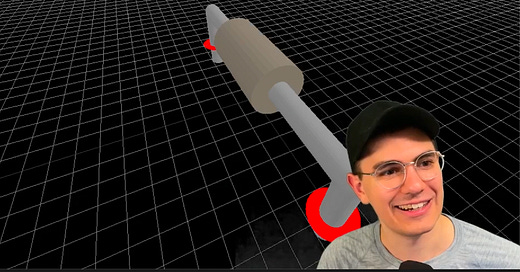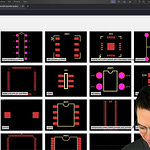In this deep-dive episode, Seve tackles the implementation of an axial resistor model for the TSCircuit JSCAD Electronics library. Watch as he navigates through multiple repositories, enhancing JSCAD Fiber with new features like extrude-from-slices and rotation support for cylinders. Seve demonstrates real-time problem-solving, from debugging type errors to refining 3D geometries. Highlights include creating a parameterized resistor model that adapts to different pin distances, and a candid discussion on balancing perfection with pragmatic development. This episode offers invaluable insights into open-source contribution workflows and the intricacies of 3D electronic component modeling.
Playback speed
1×
Subtitles
Share post
Share post at current time
Share from 0:00
0:00
/
0:00
Transcript
0:00
SPEAKER 1
Welcome, this video is all about getting you introduced to the JS CAD electronics repo. This is going to be a huge dataset of 3D models for electronics, but not just that, the models have parameters that allow you to generate variants of them. And it's very, very powerful because you have
0:20
chips with different numbers of pins and many variations of resistor sizes and all of this. And so we can generate many new models from our parameterized models. So that's why we code the models. That's why we don't create them in a traditional tool. What this means is that when AI generates our electronics,
0:42
it can use our library of parameterized models to kind of like tweak things and make it right for the design or whatever it's modeling. that's what we're doing um this repo is a medium difficulty repo so you might want to start on schematic symbols or foot printer if you're looking for an easier
Build 3d Electronics Models with React - Introduction to jscad-electronics and jscad-fiber
Bending Wires and Breaking Barriers: Implementing Axial Resistors with JSCAD Fiber
Oct 04, 2024












Share this post